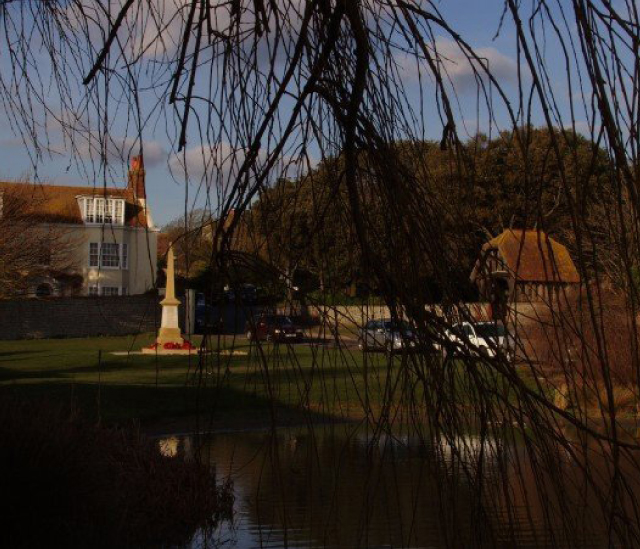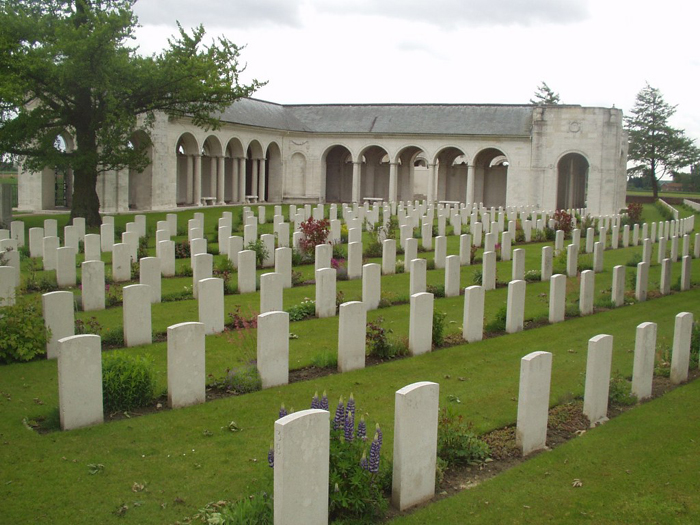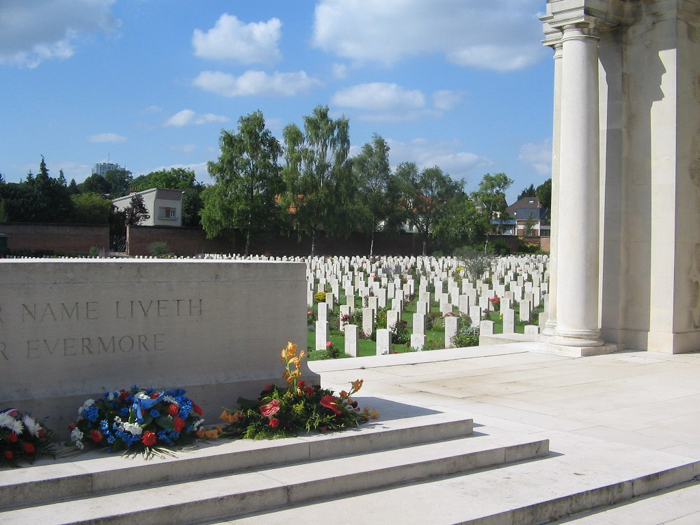Three members of Tony Titchener’s family served in the army during the First World War.
Andrew Doyle is one of three relatives who were killed in World War 1 and are commemorated on the war memorial on Rottingdean Village Green. He was a 31 year old former ship’s steward born in Belfast married to my paternal grandmother’s sister, Maud Bessie, nee Weekl(e)y, herself born in 1884 in Rottingdean. They married in early 1914. At the outbreak of the First World War, he joined the Royal Irish Rifles. He went off to fight on the Western Front and was never seen by her again. I grew up believing that for the rest of her life she never knew what had happened to him.
About 25 years ago, I visited the Commonwealth War Graves Commission monument at Le Touret, near Richebourg l’Avoue, itself near Bethune in connection with another relative and to my utter astonishment found Andrew’s name in the record book there. He was killed at Neuve Chapelle on October 27th 1914. I was thus the first person in the family for about 75 years to come across him. His wife by then was long dead. There were no children.
John Henry Weekley is my paternal grandmother’s older brother. He was killed in World War 1 and is commemorated on the war memorial on Rottingdean Village Green. He was born in 1875 in Arlington, near Polegate, the oldest son of Peter, a wheelwright, and Esther. They moved to Rottingdean a couple of years later and Peter was the wheelwright there. John did labouring work until he joined the Royal Sussex Regiment in 1894 and served on various campaigns, including time in India.
Unfortunately it seems that during that time alcohol got the better of him and he was discharged in 1902 as being unfit for further service. His life in Rottingdean after that was dominated by drink such that between 1902 and 1914 he accumulated a large number of convictions for drunkenness and related offences. He was nevertheless able to re-enlist with the Royal Sussex in 1914, but was killed at Aubers Ridge on May 9th, 1915 along with many other members of the 2nd Batallion. He is also commemorated at the Le Touret memorial.
Walter John Titchener was my father’s oldest brother. He was killed in World War 1 and is commemorated on the war memorial on Rottingdean Village Green, along with Andrew Doyle, his aunt’s husband and John Henry Weekley, his mother’s brother.
He was born in Rottingdean on 23rd June 1898, the oldest son of Walter Henry Titchener and Florence Minnie, nee Weekl(e)y.
In October 1915 he enlisted in Hood Batallion, the Royal Naval Division, declaring falsely that he was born on September 1897. The Royal Naval Division, part of the Royal Naval Volunteer Reserve, was an infantry unit which served on the Western Front and my uncle was an Able Seaman. His unit took part in the Battle of the Ancre in November 1916 and moved to Arras in March 1917. On his 19th birthday, the 23rd April, he killed in the battle to take Gavrelle, a village to the east of Arras, serving as a Lewis gunner.
He was initially only declared Missing. I was told when young that his mother had spent much time fruitlessly, searching hospitals to which the wounded were brought. Eventually, she would have been officially notified that he was believed to have been killed, but no trace of him was ever found. He is named on the CWGC monument in the Faubourg d’Amiens in Arras.
This story was submitted by Tony Titchener










